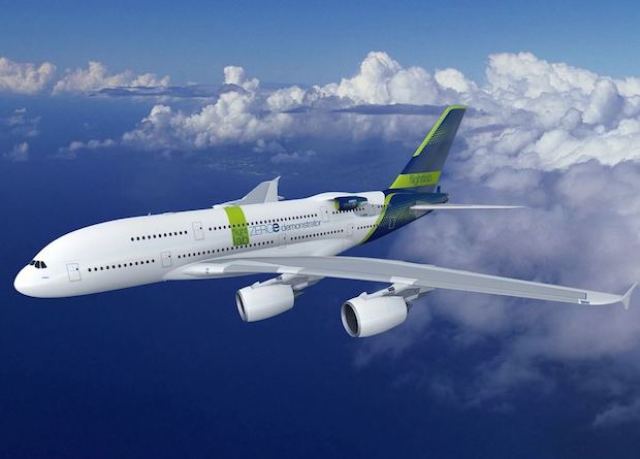The aircraft manufacturer Airbus, together with CFM International, will test a hydrogen internal combustion engine on the A380— the world's largest production airliner. Four liquid hydrogen tanks, a modified GE Passport turbofan unit and a liquid hydrogen distribution system will be installed on the aircraft. Flight tests of the demonstrator will begin within five years.
From the point of view of ecology, hydrogen fuel is an attractive alternative to conventional aviation fuel. In gaseous form, it burns easily and relatively cleanly, and leaves only water and 90 percent less nitrogen oxide than kerosene.
But the energy density of hydrogen is much lower, and it needs four times more volume. To maintain the range of the aircraft, you need a lot of liquid hydrogen and large fuel tanks. If you install them inside the fuselage, the number of seats will decrease. And if you increase the fuselage or hang a large fuel tank outside, the maximum take-off weight and drag of the aircraft will increase.
Airbus, as part of the ZEROe project, is going to develop a family of hydrogen aircraft by 2035. In particular, it should include an aircraft with turbofan engines running on hydrogen.
On February 22, the aviation concern announced that the A380, the world's largest production airliner, which Airbus stopped producing not so long ago, would become a flying laboratory for a hydrogen—powered internal combustion engine. Four tanks with liquid hydrogen and a modified internal combustion engine will be installed in the rear of the aircraft. According to the distribution system, liquid hydrogen will flow into the air conditioning system and take a gaseous form there before entering the engine.
CFM International will develop the hydrogen internal combustion engine itself. It will take the GE Passport turbofan power plant as a basis and modify its combustion chamber, as well as fuel supply and control systems.
The tanks, the hydrogen internal combustion engine and the liquid hydrogen distribution system will first be tested on earth separately and as part of a single system. Then they will be installed on the A380 and will begin testing in flight. The developers expect this to happen within the next five years.
Earlier we wrote about the Russian concept of a cryogenic hydrogen-fueled passenger aircraft. It provides for the development of a wide-body liner with an upper installation of fuel tanks inside the hull.
Vasilisa Chernyavtseva

